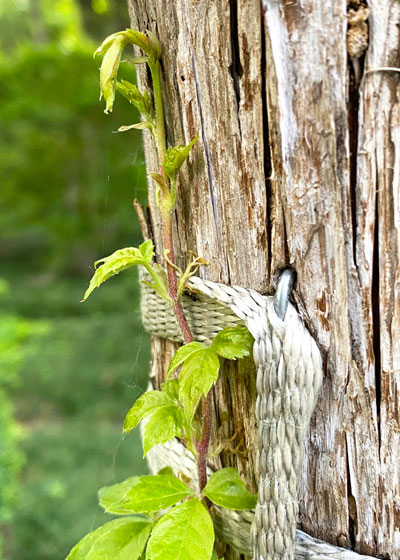How Vines Climb Matters
If you plant a wisteria against a solid brick wall it’s not going to grow anywhere.
If you plant Boston ivy next to windows with screens, your life may become miserable.
Both are examples of mistakes in knowing how those vines climb. It’s a simple explanation. Read just a little bit farther.

• Some vines twine. They wrap around their supports almost by magic. That means you must provide some kind of support around which they can reach. Examples: Carolina jessamine, wisteria, trumpetcreeper, clematis, honeysuckle, mandevilla, star jasmine, hyacinth bean and morning glories.

• Some vines use specialized roots that work like suction cups. These things stick tightly to almost any surface: glass, siding, window screens – almost any surface. And we mean they adhere tenaciously! Don’t plant them unless you’ll be able to use physical strength to brush, scrub and scrape them away later. Examples: climbing fig ivy, Boston ivy, Virginia creeper and English ivy.

• Some vines produce tendrils. These reach out like arms in the night to grab onto anything near them. It might be an arbor, a fence post or even another part of the same plant. They are very efficient climbers. Grapes, passionvines and crossvines are notable examples.

• Some plants are leaners. They can’t climb on their own. We have to provide them support and we have to tie them to it. Climbing roses are the best-known examples, but bougainvilleas also fall into this group.
